
Can a single photograph change the world? Can a thousand pictures inspire a global movement?
On Christmas Eve, 1968, Bill Anders, an astronaut on the Apollo 8 mission, snapped what would become one of the most iconic photographs of all time, an image of planet Earth rising in the darkness above a barren and lifeless moon.
At the time, millions of Americans were beginning to connect the dots between the pollution in their backyards -- the burning Cuyahoga River, the oil off the coast of Santa Barbara, the smog-filled streets of New York -- and the need for new environmental laws that could combat pollution at the national level. For many, "Earthrise," as the photograph came to be known, encapsulated in a single image this new understanding that our planet wasn't a limitless, indestructible resource, but a fragile and unique home that needed our protection.
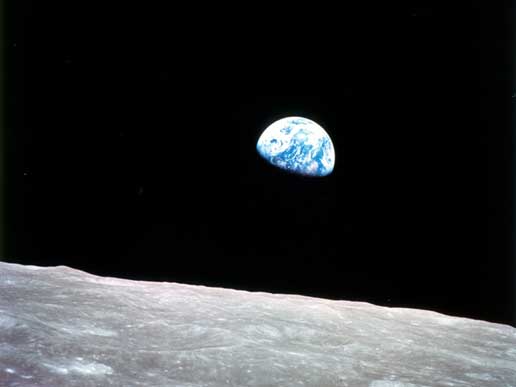
Photo: Wikimedia Commons
This new ecological consciousness helped give birth to the modern-day environmental movement. Less than two years after the photograph was taken, 20 million people marched in the streets for the first Earth Day, helping catalyze what would become the most productive era of new environmental legislation in American history.
As our generation struggles to deal with the challenge of climate change, we need another Earthrise moment. A revelation that the individual changes we're witnessing in our environment -- a warmer summer here, another 100-year flood there -- aren't just isolated incidents, but part of larger crisis, the first hemorrhages of a system-wide failure.
In 1968, an era still dominated by a few major broadcasting networks and newspapers of note, this revelation could come in the form a single photograph. In 2012, with our limited attention spans chasing after the latest tweet or Facebook post, perhaps our moment of insight will take a different form.
This weekend, 350.org, an international climate campaign I co-founded in 2008 with a group of college friends and writer and environmentalist Bill McKibben, hosted Climate Impacts Day, a global effort to connect the dots between local climate impacts -- like the extreme weather events millions of people across the planet have experienced in the last couple of years -- and the broader climate crisis.
For the last 48 hours, I've been clicking through the thousands of photographs that flooded into our Flickr page from Climate Impacts Day events taking place in more than 100 countries around the world.
Many of the pictures are uplifting, like this shot of a group of students in Johannesburg, South Africa, forming a dot in their community garden to show that their working hard to care for the seeds of a more sustainable future:
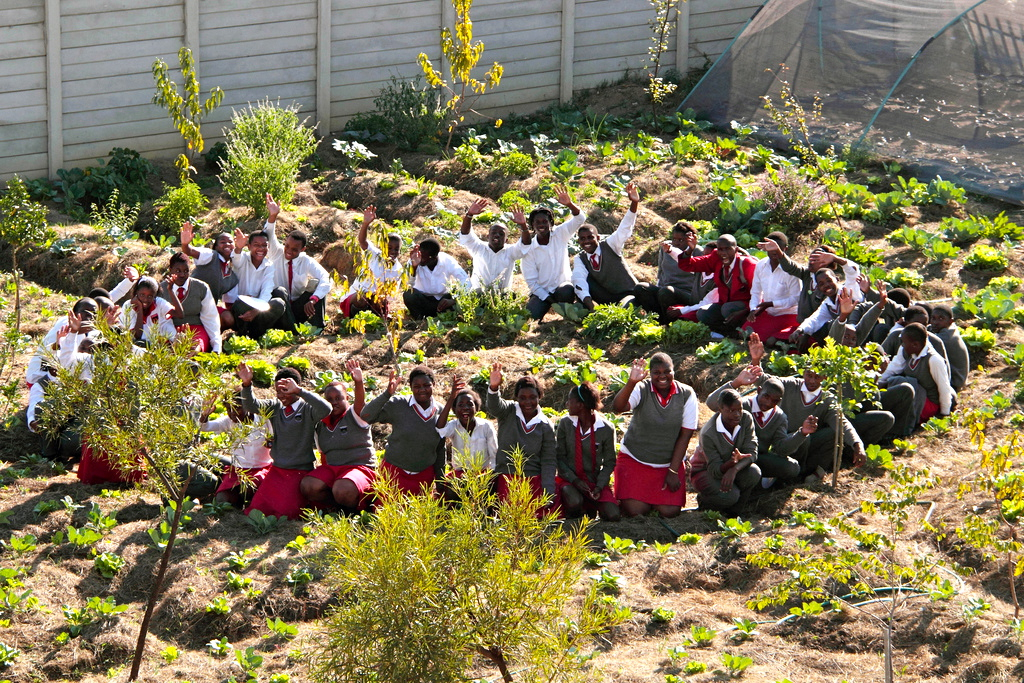
Others are funny, like this picture of a giant 80-foot banner that says "I'm Melting" laid out on the Dana Glacier in the Sierras:
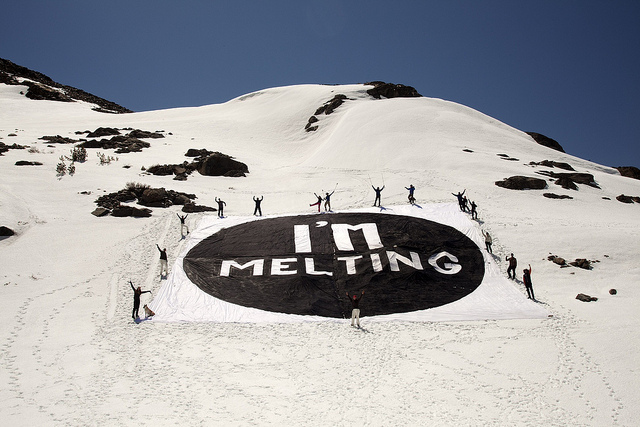
There are photos of activists connecting the dots to the roots of our current crisis, like this group from Occupy London who held a giant game of climate "Twister" to show how the 1 percent profits from climate destruction:
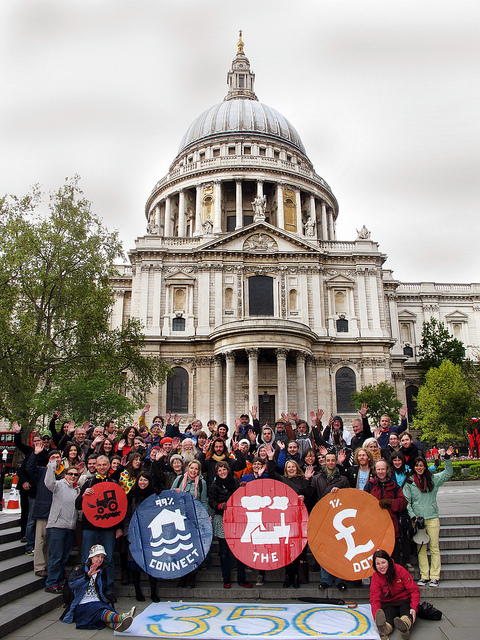
And images that demonstrate incredible creativity, like this photograph from Orissa, India of a sand-sculpture connecting the extreme heat the region is experiencing to global warming:
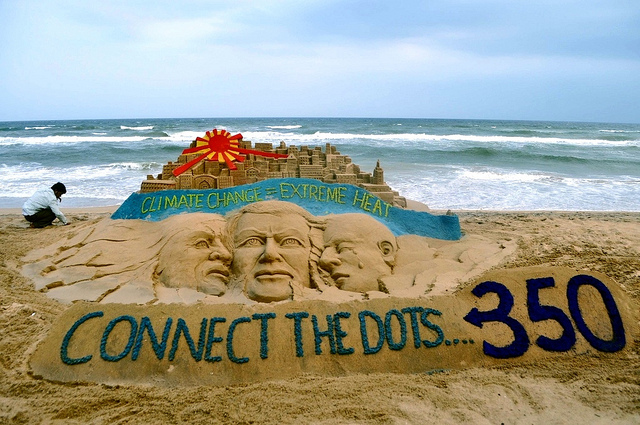
But a great deal of the images are incredibly sad. These women in Pakistan are standing outside the "temporary" shelter that has been their home since record flooding in 2010 displaced them and 20 million others:
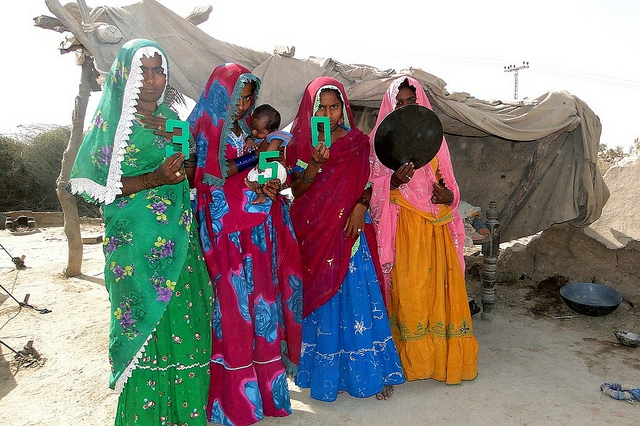
Halfway around the world in Vermont, another woman stands in the remains of her cafe that was wrecked by flooding after Hurricane Irene battered the state last August:
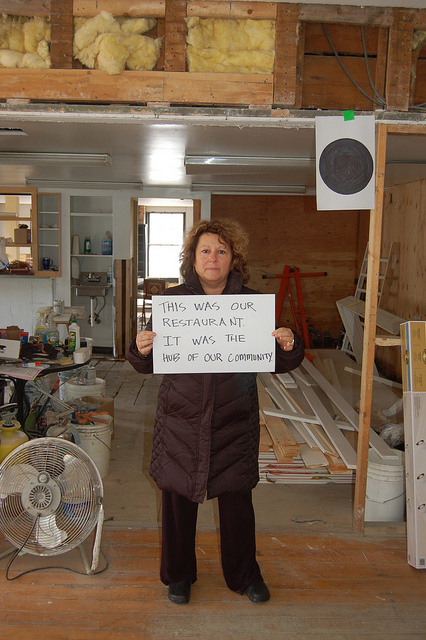
Even some of the more whimsical photos are poignant. Like this group of young people in the Maldives who found a creative way to show what sea level rise will mean for their islands. My first thought was, what a cool way to visualize a climate impact. My second was, these kids could be refugees in the next couple decades:
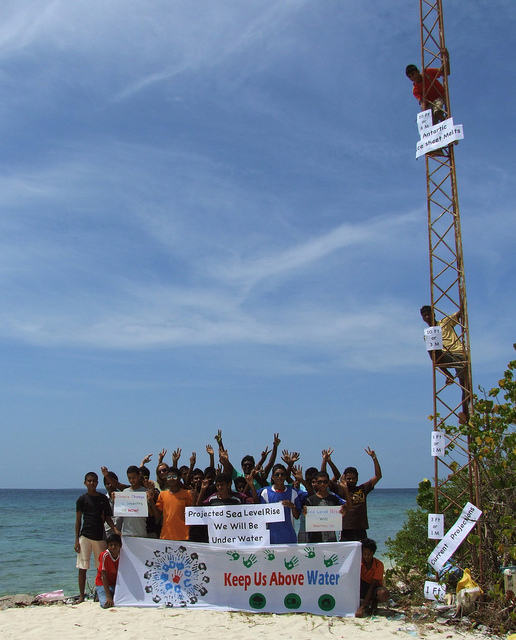
Or this picture of a young girl in Brazil, posing in an entire living room recreated in the waves. She's probably having a great time, but the picture is a good reminder that more than 634 million people around the world live within 30 feet of sea level:
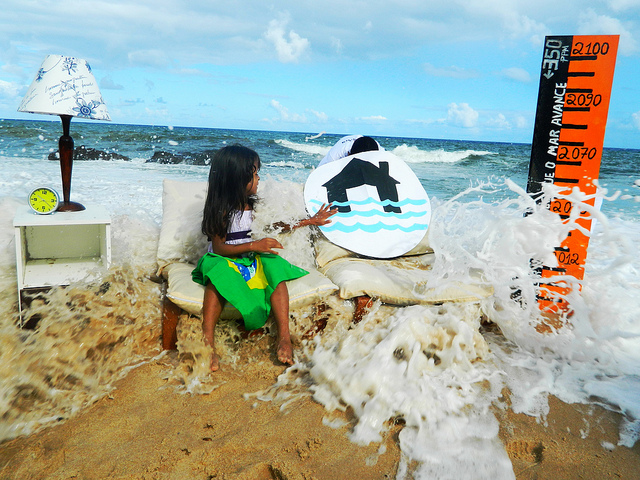
As I looked through face after face of people already bearing the impacts of the climate crisis, it began to dawn on me that maybe we've been looking for our Earthrise photo in all the wrong places. Seeing a picture of the Earth from space allowed a previous generation to re-imagine their connection with the planet. Perhaps a new set of pictures can help us re-imagine our connection with each other. Maybe putting a human face on climate change, switching out some of the polar bears for people, can help us understand more deeply that global warming isn't some environmental challenge for the future but a human rights crisis in the here and now.
After all, the Civil Rights movement in this country didn't turn to graphs of socioeconomic inequality to convey the fundamental injustices of segregation. They looked to photographs of everyday people: Rosa Parks sitting on that bus, young girls being attacked by Bull Connor's dogs.
According to Julian Cox, who curated a show of civil rights photography at the High Museum in New York City, movement leaders saw photography as a crucial tool for raising public awareness and mobilizing their base. "That was definitely understood by the leaders," Cox told the New York Times. "I cannot emphasize enough how well prepared they were, how they understood almost immediately how they could use the medium to advance their cause."
I doubt that any one photograph from this weekend will have the transformative effect of Earthrise or that Rosa Parks picture, but as Facebook feeds around the world fill up with these pictures -- the women in Pakistan, the child in Brazil -- perhaps a few people will be struck with that moment of insight or a few more will begin to see that human dimension of the climate crisis.
It's a small step forward in putting a human face on one of the greatest challenges we've ever faced.
